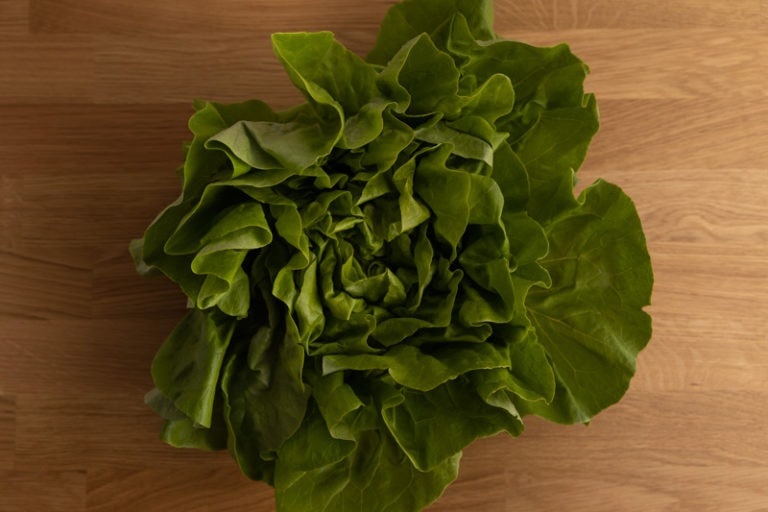How to Tell if a Sweet Potato Is Bad? [4 Spoilage Signs]
Here’s all you need to know about the spoilage of sweet potatoes. Learn what to look for when checking their quality and what’s okay to ignore.
So you’ve got a sweet potato that’s been stored for a while and is wrinkly or discolored. That makes you wonder: how to tell if a sweet potato is bad?
Let’s talk about the spoilage signs of sweet potatoes, then.
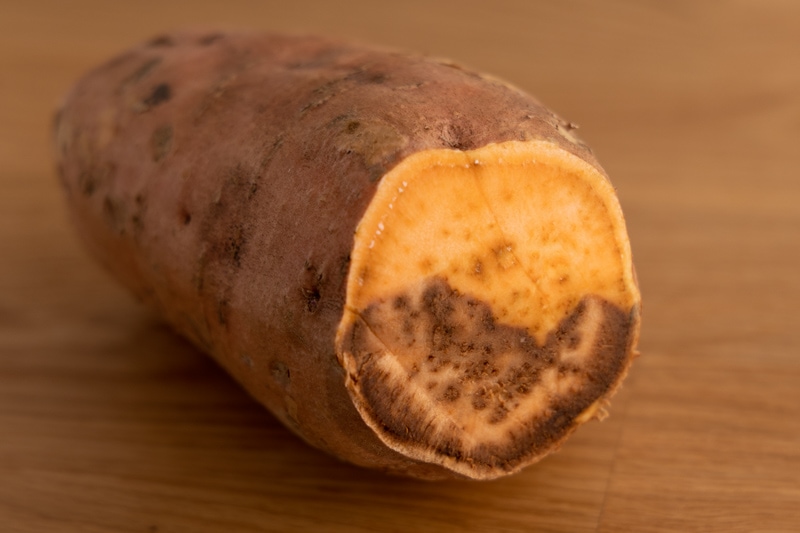
How to Tell if a Sweet Potato Is Bad or Spoiled?
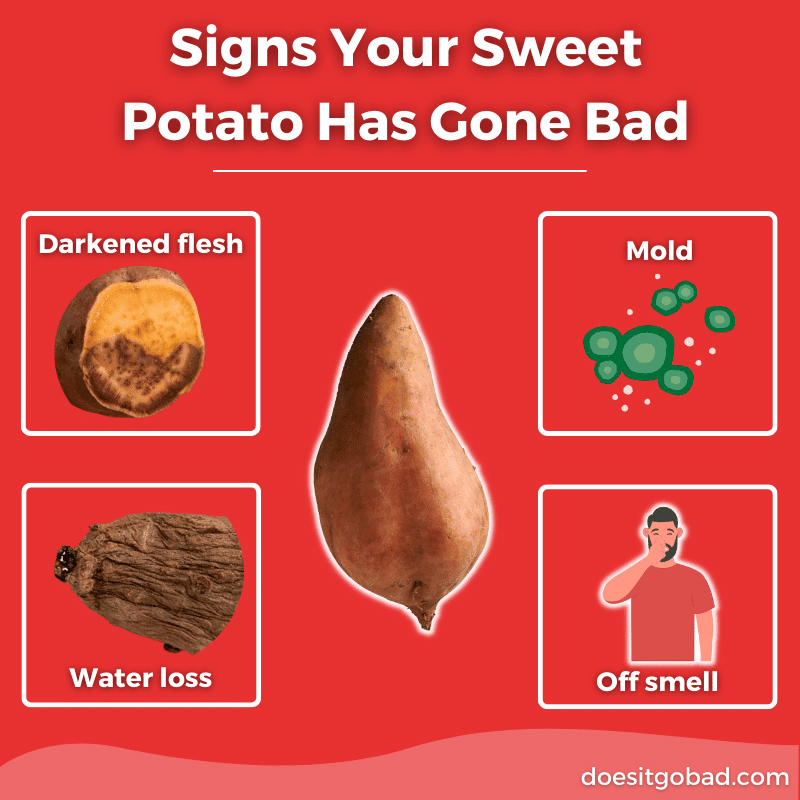
Your sweet potato is bad if it’s moldy, soft, squishy, or seeping. It’s no good if it’s wrinkly or the skin has noticeably darkened. If only a small area is affected, and most of the sweet potato is firm and in color, you can cut off the affected portion and cook the rest.
That’s the gist of it.
Now, let’s talk about these in more detail.
Water Loss
Water loss in sweet potatoes takes different forms.
If the whole sweet potato is soft, light (as if it’s hollow), slimy, or oozing water, it’s gone. Losing that much moisture makes the veggie pretty much useless and is a good enough reason to toss it.
But often, things don’t get this far, and you’re left with a sweet potato that’s a bit wrinkly or has a soft spot or two. If that’s the case, you can usually cut off the wrinkled or soft area and use the rest.
Of course, if it gets to the point that more than half of the sweet potato is wrinkly and discolored, it’s probably better to toss it.
Here’s a sweet potato that I left in storage for way too long:
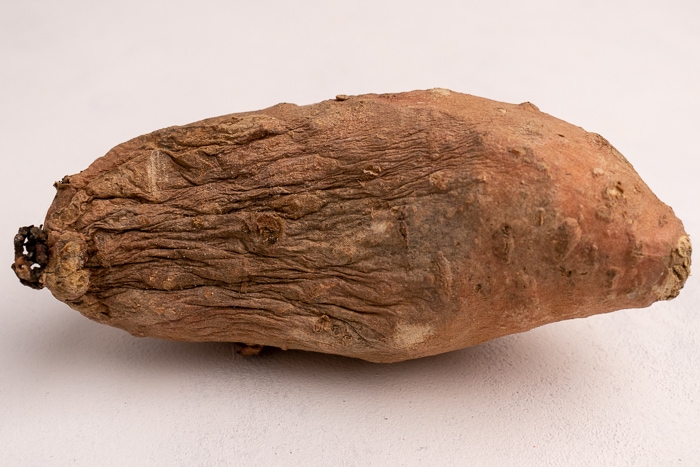
As you can tell, it has lost lots of water, and I decided to toss it. Had the wrinkled part been half of it, I’d have probably cut it off and used the rest.
Darkened Flesh
Darkened flesh is usually a consequence of water loss, and you can most often find it beneath wrinkled skin or soft spots.
Here’s what it might look like:

The darkened flesh is spoiled, and you need to cut it off if you still want to use the sweet potato. In the case of the potato above, I had to cut almost half of the spud, but at least I didn’t have to discard the whole thing.
(When cutting off the discolored flesh, make sure to cut off some extra just to stay safe.)
If you notice that more than half of it is darkened after peeling the spud, it’s probably better to toss it. It’s a balancing act.
Mold
Mold usually shows up on sweet potatoes that are bruised or have some cracks in the skin. Sometimes those skin cracks might even be caused by water loss.
Here’s what a moldy spot might look like:
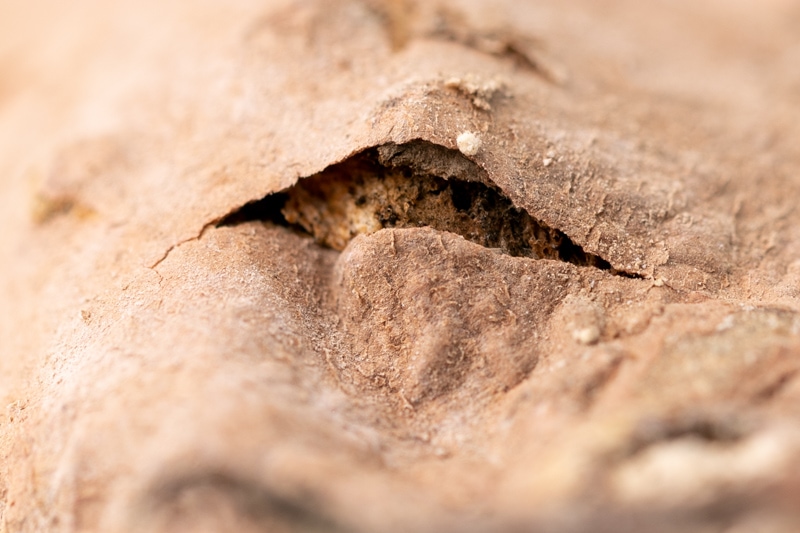
As with darkened flesh, you can cut off the moldy area if it’s small (with some extra), but if it’s taking over, that sweet potato is no good.
That’s it for moldy raw sweet potatoes.
Mold on cooked sweet potatoes is a whole different story.
If you find mold on cooked sweet potatoes or any other cooked dish you took from the fridge, toss it.
Cutting or scooping the moldy part isn’t a good idea because mold can easily penetrate most cooked foods. That means an infected area might not be covered with mold or show any signs of spoilage.
In other words, you don’t cut off the moldy area because there’s no easy way to tell how much is affected. And the correct course of action is to toss the whole thing.
Off Smell
If your sweet potatoes smell sour or off in any other way, discard them.
That said, odor change isn’t all that common in sweet potatoes, and visual spoilage signs usually precede it.
In other words, if your sweet potatoes are smelly, chances are they also don’t look all that great. And if that’s the case, it’s pretty apparent they’re gone.
Having covered the typical spoilage signs, let’s talk about things that you might find a bit concerning but are usually a-okay.
What’s Concerning but Usually Okay
Holes on the Surface
If you store them for more than a couple of weeks (here’s how long sweet potatoes last), they sometimes develop holes on the surface.
Here’s what I am talking about:
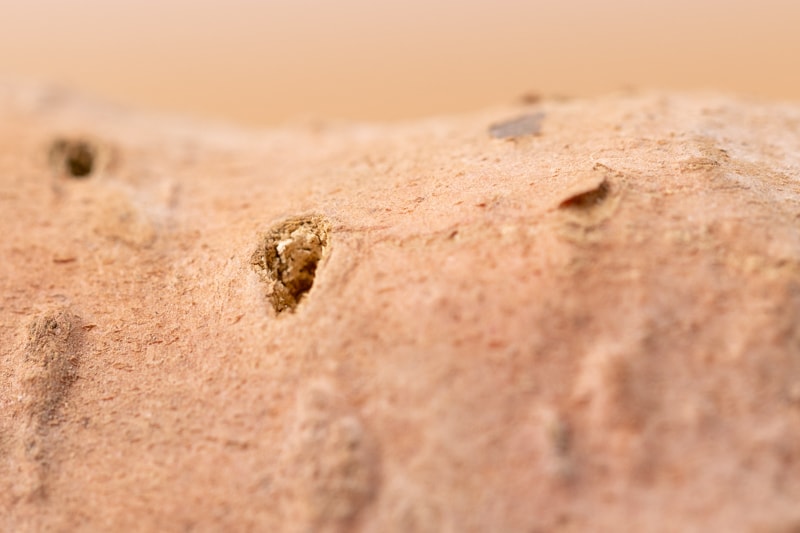
As far as I can tell, there’s no need to toss sweet potatoes that develop those. Instead, you cut the holes off the same way you cut a darkened area and go about your day.
In my experience, these are typically quite small, and you can easily remove them without losing much of the spud.
Holes Inside
Sweet potatoes with holes inside are sometimes called spongy, but the proper term to use is pithy. Those holes are usually caused by storing the tubers at too high temperatures for a prolonged period.
A pithy sweet potato is perfectly safe to eat, and as long as there are only a handful of small holes, I recommend using the tuber as usual.
But if the holes are all over the place, throw the sweet potato away to be safe. It probably isn’t spoiled, but it will taste bad, so there’s no point in cooking it anyway.
Sprouting
Sprouting sweet potatoes are okay to eat. While the quality of a sprouting tuber isn’t the best, it’s still okay to eat and tastes fine. You just need to cut off the growths and use the sweet potato as usual.
Interestingly, the shoots are also edible and are commonly eaten in some countries.
In other words, shoots growing from your sweet potato aren’t a spoilage sign, and neither are “eyes” on the surface of the tuber.
(The same is true for other veggies: sprouting garlic is okay to use, and sprouting potatoes are fine to eat.)
Of course, I’m talking about a couple of short shoots from the sweet potato, not lots of long sprouts. If things get this far, toss the spud the same way you toss regular potatoes that are covered with sprouts.
The sprouts extract water and nutrients from the bulb, so the longer they are, the lower the quality of the bulb. So if the sprouts are longer than a couple of inches, chances are the sweet potato itself will be no good quality-wise.
White Stuff Inside a Sweet Potato
The milky white residue you sometimes find when you cut sweet potatoes is supposedly a mixture of starch and sugar, and it’s perfectly safe. Sometimes it looks like white specs, while other times, it’s more liquid and starts to ooze after cutting. But it’s the same thing.
Here’s what it might look like:
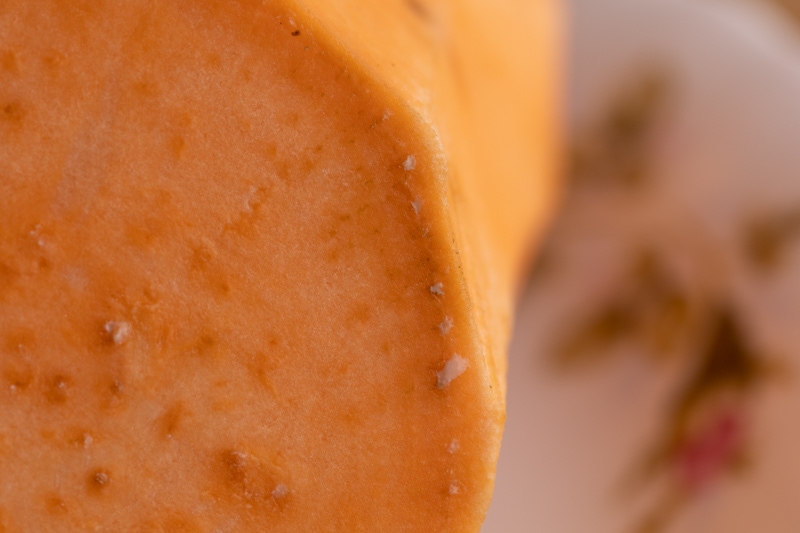
You can leave it as is and cook the sweet potato, or wash or cut it away if it bothers you that much. It most likely won’t be noticeable after cooking anyway, so I recommend leaving it alone.
I couldn’t find any trustworthy sources to confirm that the white stuff is actually a mix of starch and sugar and that it’s safe to eat. So if you’re not perfectly fine with using these, I suggest cutting off the white dots and using the rest. I use them whole.
Rotten Records: Share Your Snap!
Caught some food past its prime? Upload your photo to “Rotten Records” and help others spot the signs of spoilage. Every image makes our food community safer and more informed!
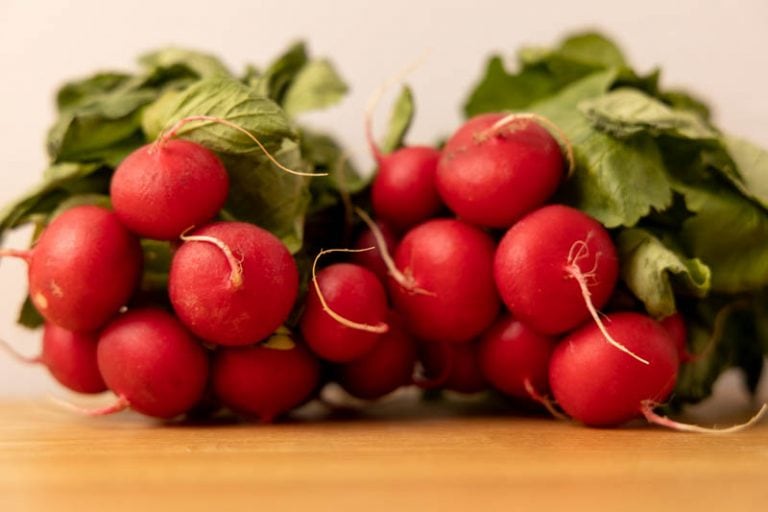
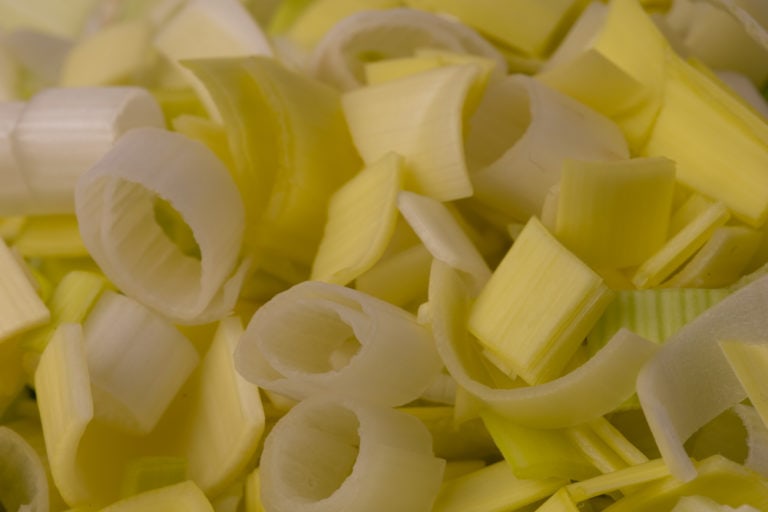
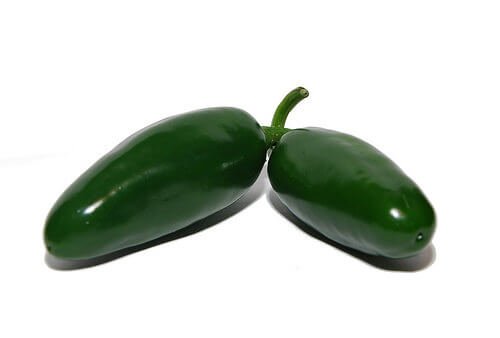
![How to Tell if Bell Peppers Are Bad? [3 Main Spoilage Signs]](https://www.doesitgobad.com/wp-content/uploads/Bell-peppers-spoilage-signs-768x512.jpg)
![How Long Does Garlic Last? [Whole Bulb, Peeled, Minced]](https://www.doesitgobad.com/wp-content/uploads/Garlic-bulb.jpg)
